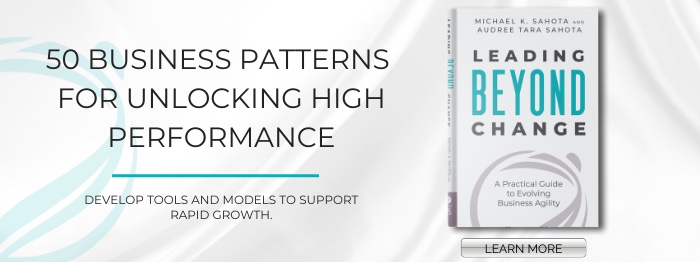Let’s face it, most meetings suck. The question is not whether or not they’re good, the question is how terrible are they? Meetings usually go on a scale of mediocre to downright, mind-bogglingly horrible.
You might ask, “How do I turn these horrible meetings that are sucking the lifeblood out of everyone into something useful?” That’s a really good question, and we’ll share our answer, based on decades of experience working with organizations.
We love awesome meetings and we will share our secrets with you! We’ll give you practical, actionable tips to make meetings relevant, valuable, and engaging. Our purpose stems from this one statement; How can we help you be successful? What if your meetings become the ones that people are scrambling to get into?
How to Create Amazing Meetings
Imagine you’ve got a meeting, and you want to achieve some objective. There are a few important considerations:
- What is the purpose of the meeting? What do you hope to achieve?
- Who should be there?
- Who gets to decide?
- Why would anyone want to come to your meeting? What’s in it for them?
- Do other people want to achieve the same things that you do or do they have different objectives?

Why are these such important questions? Usually, we make assumptions. My meeting’s important. Everybody wants to come. People want the same thing that I do. Usually, we assume a bunch of things that are just not true.
The way to create a successful meeting is to look at your assumptions. Let’s walk through that step-by-step.
Steps to a Great Meeting
- Identify the purpose of the meeting
- Decide who needs to be involved
- Identify who gets to decide
- Understand alignment
- Create space for contribution

Step 1: Identify the Purpose of the Meeting
One of the secrets to having incredibly successful meetings is to clarify the desired outcome. What is the best possible outcome for your meeting? What is it that you actually hope to achieve?
Ultimately, all meetings are about moving forward the purpose of an organization. Often, that means moving towards some sort of decision. However, moving to a decision too soon may lead to a sub-optimization. There are many different purposes that all lead to the healthy functioning of an organization. Here are some common examples of the purpose of a meeting:
- Generating Ideas
- Decision Making
- Sharing Information
- Building Connection
Meetings can serve these different purposes, which are all ultimately about moving the organization forward. In any given meeting, as the holder of the meeting, it’s vital to clarify the purpose of this meeting. This is what we’re here to accomplish.
4 Types of Meetings
Let’s explore the four types of meeting purposes to see what combination will meet the goals that you hope to achieve from the meeting.

Generating Ideas
Some meetings are about early parts of the decision-making process: generating ideas. The purpose of these meetings is not to come to a resolution, but to percolate ideas so our unconscious minds can process information over time. This allows us to gain insights so that we can bring those ideas together to eventually shape decisions. Brainstorming is a great approach. A good brainstorming session follows this process:
- Generating ideas
- Exploring/Expanding ideas
- Refining/Converging/Narrowing ideas
- Making a decision
Decision Making
Many meetings have the purpose of coming to a decision, or an agreement about how to proceed. Are we going to use this technology? Which strategy are we going to use? What should the development team work on first? There’s usually a decision that we’re looking for. The question to answer before the meeting is, what is that decision or outcome that you’re hoping for? Being explicit about this can help the meeting go more smoothly.
Sharing Information
Some meetings are just for sharing information. Google is famous for this – they’d have their weekly Town Hall where they’d give an update on what’s happening across the organization. Disseminating very important information to everyone in the organization creates a mechanism for people to know what’s going on so they can stay synchronized. That way, they can independently make good decisions for the organization because they know roughly where it’s going as a whole.

Building Connection
The primary purpose of some meetings, or part of some meetings, is for people to connect as human beings, talk about themselves, share their stories, and talk about what they’re working on. This isn’t a waste of time, in fact, it’s an essential part of high performance. Taking time to connect builds the trust needed for a high performance work environment.
Healthy human connection supports good decision-making, because we’re not going to make good decisions if we don’t trust each other, if we’re not connected, and if we don’t really have an investment in the people we’re working with.
Step 2: Who Needs to Be Involved?
Who actually needs to be at the meeting? Too often, an organizer will fill a conference room with people who don’t actually need to be there. Yet too many people will kill a meeting. There’s a famous rule from Luke Holman, “More than eight, no collaborate.”
If you have more than eight people, you’re not going to be able to have a collaborative meeting where people can share and talk to each other, because there are too many voices. The smaller the number of people at the meeting, the more successful it will be.
Practice: Use the Fishbowl for Large Meetings
Sometimes you can’t get around having more than eight people at a meeting. In that case, here’s a structure that can help: Create what’s called a Fishbowl, where you only have five people who are having a conversation at a time. They’re representatives of larger groups who are there listening in.

They can receive chat messages in order to represent the other stakeholders that they’re standing in for. Or somebody who’s part of their group can just tap them out and jump in in their place. That way, a group can have a really rich conversation, but there is always a limited number of people participating.
Some other structures include Open Space, Liberating Structures, and Zoom Breakout Rooms.
Step 3: Identify Who Gets to Decide
Who can actually make the decision? Or, who needs to agree or be on board? This is where using a technology called Decision Cards is very helpful. It’s about determining who actually gets to make the decision. Is it your decision to make and you’re just getting advice from other people? Is it somebody else’s decision and you’re giving them advice? Or is it something you’re deciding with others as equals?
It is really important to understand who is making the final decision. This clarification will avoid invisible fences within the organization. If there is a decision or outcome you want, who actually holds the power to make that happen? When information on decision making is transparent, this creates more psychological safety. There is no guessing and no mistakes, and everyone knows who is making the decision.
If you’re a normal person working in most organizations, you’re not the decision-maker. All you can do is come up with a proposal and somebody else higher up has to approve it. But you can still use this format to get agreement at your level of the organization, with your peers and your cohort.
Step 4: Understand Alignment
The next task is to look at the people who are involved and understand how aligned they are with your objective. This takes doing the mental exercise of walking in another person’s shoes. Do they care about your proposal? Do they think something else would be better? Do they think the exact opposite should happen?

You want to start thinking about what’s important for them. If you don’t know, gather that information in your meeting by creating space and time to understand what other people want. If you’re trying to build alignment and create a win for everyone (which is a win for your organization) you need to slow down and understand where other people are coming from.
There are many simple tools you can use to get a sense of whether people are in alignment. You can use electronic polling software to do readouts of the group, or you can use technologies like Fist to Five voting, where everyone puts up between one and five fingers depending on their level of agreement.
Step 5: Space for Contribution
We define the term Equal Voice as giving everyone a chance to speak before questions and discussion. When we create a space for everyone to contribute their ideas, we’re going to make better decisions.
One way to put this into practice is, at the beginning of a meeting, state what you think is important to talk about. And then ask, “Are there other things that people think that we also need to talk about that are also as important or more important?” Creating this space allows people the chance to speak up. “Oh, actually, yeah. We have this production emergency over here. We should probably talk about that first.”

If you do that, it means when you finally move to the topic that you’re trying to move forward, your purpose, you’ll have people’s full attention. This is part of the way to make sure you get the outcome of the meeting you’re hoping for, by making sure people’s needs are looked after.
For more information about Equal Voice, refer to the high-performance meeting protocol tool that we have in our book, Leading Beyond Change.
Tip: When giving people an equal voice to share their thoughts, opinions, etc. make sure that the information of who makes the final decision is known. Too many times we ask for people’s input, yet we do not follow the advice. When you make the statement “I have a decision to make, yet I would like to have everyone’s input before I make the decision.” People then understand you are seeking advice that may or may not be used. There is less room for confusion or resentment that their advice did not count.
In Conclusion: Don’t Waste Other People’s Time
If you don’t run kickass meetings, you’re wasting your time. You’re wasting other people’s time. You’re limiting your ability to achieve results. And it’s not very much fun. Put the effort in and learn how to create amazing meetings. Become a rock star at it, so you can rock your outcomes.
Meetings are all too often rushed, boring and unproductive. People do not feel heard or valued, or the meetings are really a way to mandate and tell people what to do. Every meeting is a chance to build an extraordinary culture within your organization. High performance is gained through collaboration and engagement during these meetings.
Use the time to listen to the people and understand what they want and need. Use games to establish psychological safety, equal voice and connection. A boring meeting is a waste of your time and your organization’s time. A great meeting says everything about how you are showing up as a leader. Evolutionary Leaders hold awesome meetings where everyone is welcome, creating, learning, collaborating and moving the organization forward together.


